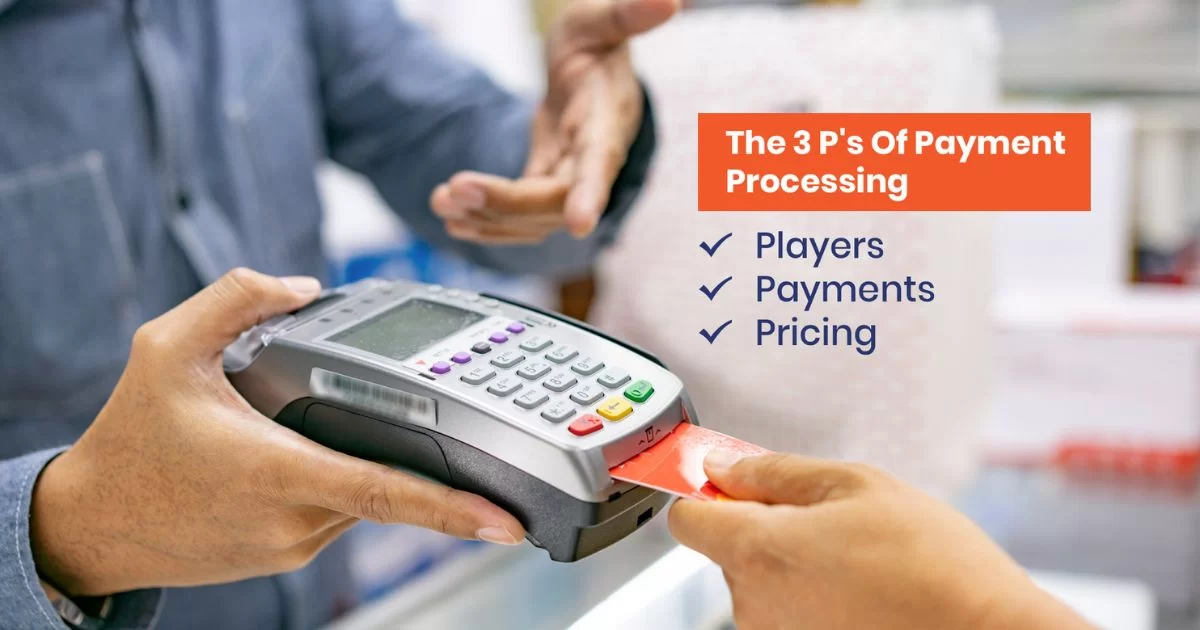
| November 21st, 2018 |
Payment Processing — Did You Know The 3 P’s Of Payment Processing?
Online shopping fever has risen in today’s economy, resulting in the setting up of digital shops to accept online payments. Success is extending friendship hands to businesses that are incorporating online payment processing. Feeling like starting? Understand the essentials 3 P’s first:
- Players
- Payments
- Pricing
Players —
In terms of processing credit and debit cards, there are three major players. On the one end is the business or merchant, on the other end is the customer and the middle section is occupied with technology that connects the two.
- Merchant: To accept credit and debit cards from online customers, partnering with key players is important. A business owner needs a merchant bank that accepts payments on its behalf to deposit them in the merchant account.
- Customer: Customers need credit or debit cards to pay online. Bank approving the card is known as the issuing bank.
- Technology: In the middle are two technologies that enable you and your customer to transact. The first is the payment gateway, software that links your site’s shopping cart to the processing network. The second one is the payment processor who moves the transaction, sends a billing statement, and works with the bank and a lot more
Payments —
Understanding how money moves from a customer to a business is quite important. Payment processing has two stages:
- The authorization
- The settlement
The authorization process involves:
- Customer purchases a product on the website with a credit or debit card
- The details travel down the payment gateway, encrypting the data to maintain its privacy followed by sending it to the payment processor
- Request is sent to the customer’s issuing bank by the payment processor to assure whether they have enough credit for the payment
- In case of ‘approval,’ the issuer responds with ‘yes’ and in case of ‘denial,’ the issuer responds with ‘no’
- Payment processor sends the answer about approval of the sale and asks the merchant bank to credit the merchant’s account.
Now comes the settlement phase or the second phase:
- Card issuer sends the funds to the merchant bank to deposit the money into their account.
- Funds are transferred.
Pricing —
Everyone who is involved with transactions needs to get paid by it the issuing bank, credit card association, merchant bank, or payment processor.
Every time a sales transaction is processed, four fees are paid:
- Percent of the transaction amount: Issuers take a certain percentage of each sale, known as the interchange. This fee depends on a number of things, like sale amount, industry, and type of card that is used.
- Another percent of the transaction amount: Credit card association charges a fee too, which is known as an assessment.
- Even more percent of the transaction amount: Merchant bank charges a percentage fee. Here also, the amount depends on sale amount, industry, monthly processing volume, etc.
- The dollar amount of every processed transaction: The payment processor makes money by costing a fee known as an authorization fee whenever a transaction is processed. Moreover, it can also ask for setup fees, account cancellation, and monthly usage.
Most of the pricing structures come under one of three categories:
- Flat-rate pricing: Here, a fixed percentage is paid for all the transaction volume irrespective of the actual costs. Above mentioned fees are baked into this single rate.
- Interchange plus pricing: Merchant service charges a certain fee on top of the interchange.
- Tiered pricing: The processor takes different interchange rates to lump them further in three pricing tiers:
- Qualified
- Mid-qualified
- Non-qualified
This makes things easy for everyone. However, as the processor defines the pricing tier it wants, it can turn expensive.
And this was all! We hope you have found this post useful. Stay tuned for more!